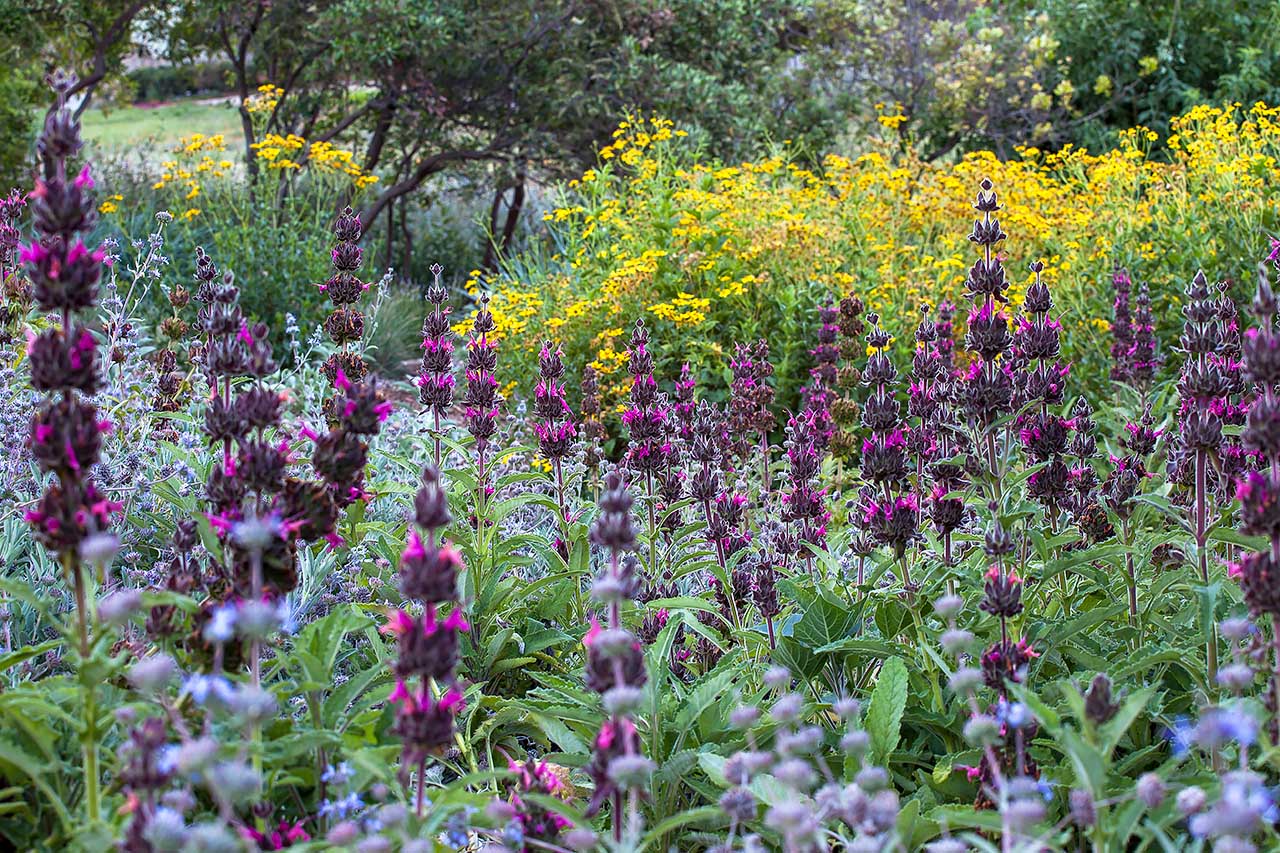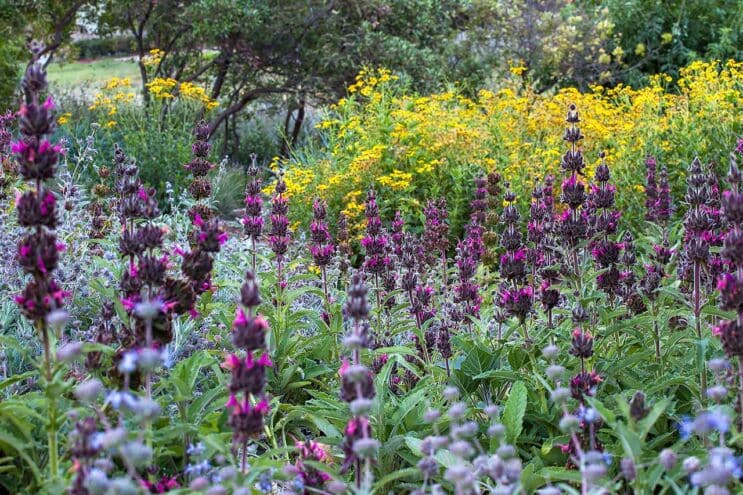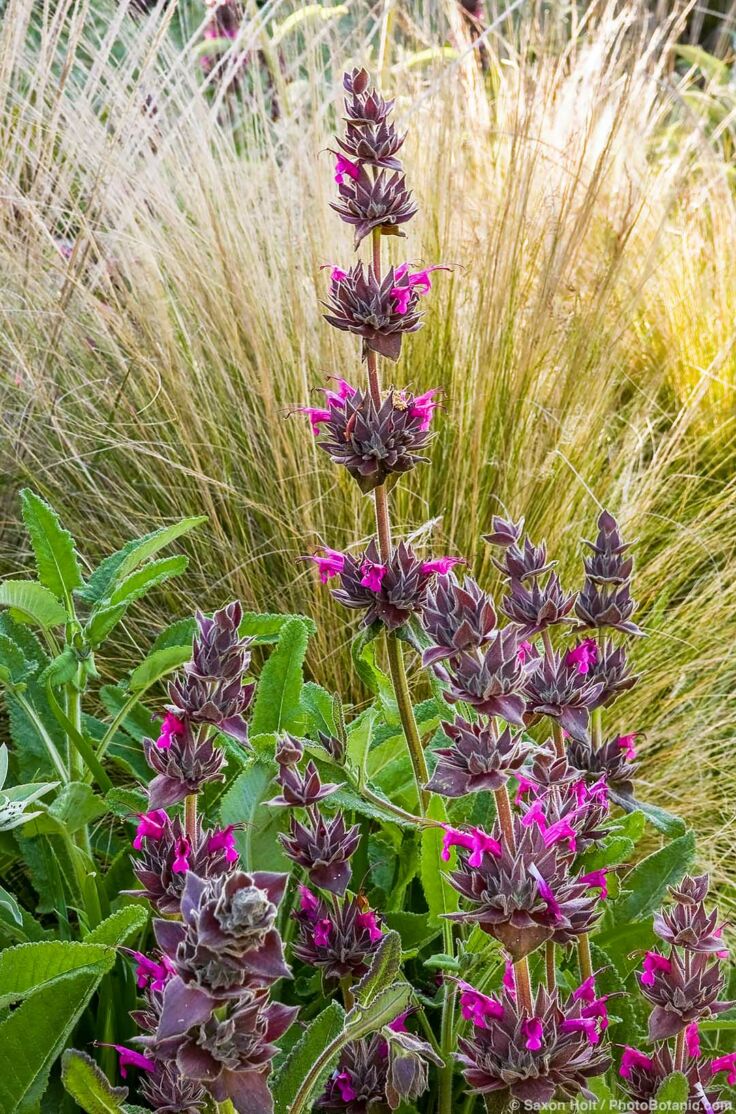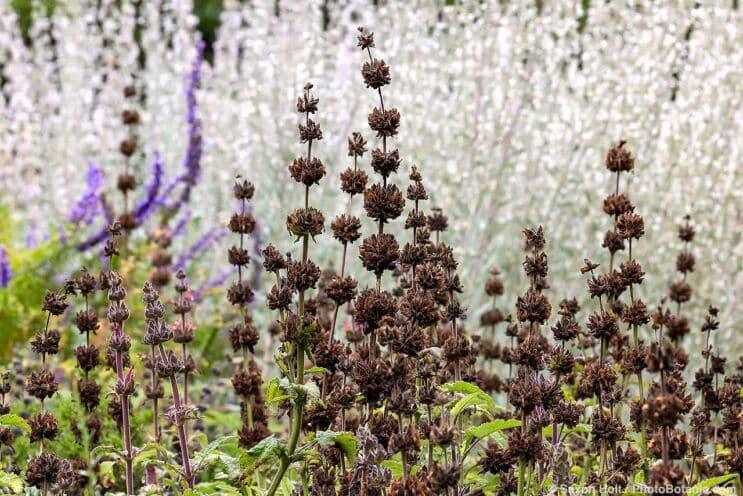Hummingbird Sage

Share This!
Blooming from early spring well into summer, hummingbird sage (Salvia spathacea) is an easy and adaptable plant for summer-dry climates. This low, slowly spreading sage accepts sun or shade, almost any reasonably drained soil, and moderate, occasional, or no summer watering. It is an especially good candidate for dry shade.

Salvia spathacea in flower in the Santa Barbara Botanic Garden
Hummingbird sage is endemic to central and southern California, commonly found in sunny or shaded spots among oak woodland, chaparral, and coastal sage scrub in foothills and valleys not far from the coast.
Summer-dormant if grown dry, this sage bears small, rosy pink to magenta, two-lipped flowers in whorls spaced out along tall stems. The large, soft, lance-shaped, green leaves are distinctively aromatic and appear almost quilted in texture.

Flowers are in whorls spaced out along upright stems.
Highly attractive to hummingbirds, bees, and butterflies but not to deer, hummingbird sage creates a mounding groundcover 12-18 inches tall with flowering stems adding another foot or so.
Plant this sage in front of taller perennials and shrubs or blend it among other low groundcovers. The flowering stems are attractive even when dry, adding an architectural touch to an otherwise loosely structured landscape.

Flowering stems in late summer and fall
Share This!
Related Articles
By: Saxon Holt
By: Nora Harlow





